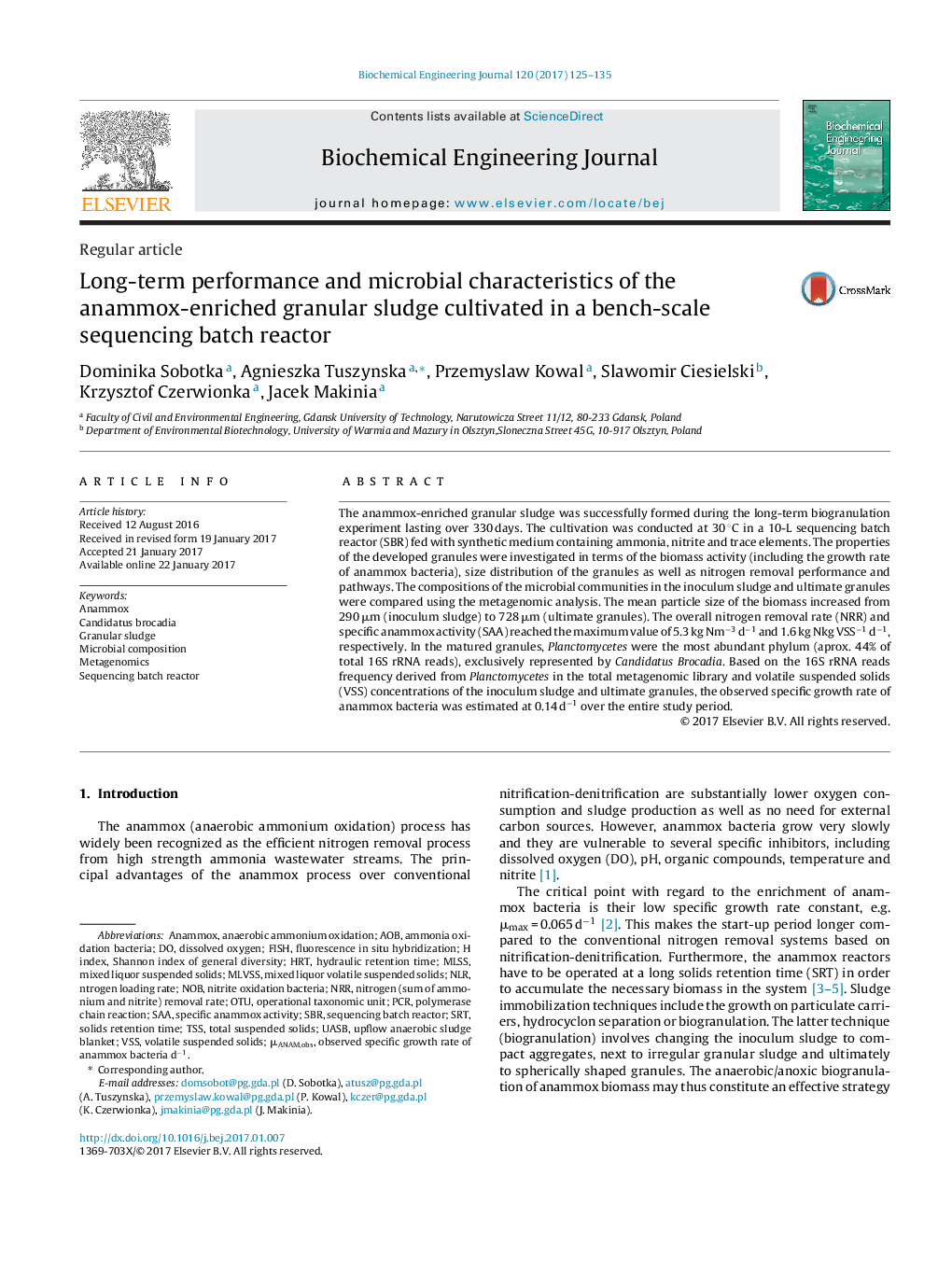| Article ID | Journal | Published Year | Pages | File Type |
|---|---|---|---|---|
| 6450362 | Biochemical Engineering Journal | 2017 | 11 Pages |
â¢The mean size of the anammox granules reached 720 μm after a 1-year cultivation.â¢The maximum observed specific anammox activity at T = 30 °C was 1.6 kg Nkg VSSâ1 dâ1.â¢Anammox bacteria were exclusively represented by Candidatus Brocadia.â¢Candidatus Brocadia increased its contribution in microbial community from 15 to 44%.â¢Observed specific growth rate of Candidatus Brocadia was 0.14 dâ1.
The anammox-enriched granular sludge was successfully formed during the long-term biogranulation experiment lasting over 330 days. The cultivation was conducted at 30 °C in a 10-L sequencing batch reactor (SBR) fed with synthetic medium containing ammonia, nitrite and trace elements. The properties of the developed granules were investigated in terms of the biomass activity (including the growth rate of anammox bacteria), size distribution of the granules as well as nitrogen removal performance and pathways. The compositions of the microbial communities in the inoculum sludge and ultimate granules were compared using the metagenomic analysis. The mean particle size of the biomass increased from 290 μm (inoculum sludge) to 728 μm (ultimate granules). The overall nitrogen removal rate (NRR) and specific anammox activity (SAA) reached the maximum value of 5.3 kg Nmâ3 dâ1 and 1.6 kg Nkg VSSâ1 dâ1, respectively. In the matured granules, Planctomycetes were the most abundant phylum (aprox. 44% of total 16S rRNA reads), exclusively represented by Candidatus Brocadia. Based on the 16S rRNA reads frequency derived from Planctomycetes in the total metagenomic library and volatile suspended solids (VSS) concentrations of the inoculum sludge and ultimate granules, the observed specific growth rate of anammox bacteria was estimated at 0.14 dâ1 over the entire study period.
